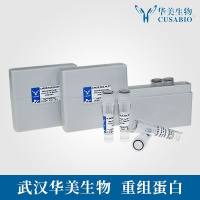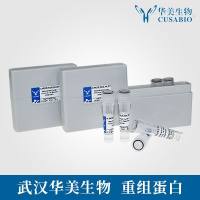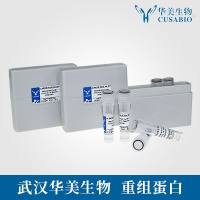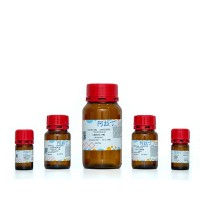Characterizing Bile Acid and Lipid Metabolism in the Liver and Gastrointestinal Tract of Mice
互联网
- Abstract
- Table of Contents
- Materials
- Figures
- Literature Cited
Abstract
Mouse models that mimic human diseases are invaluable tools to study and discover genetic and pharmacological therapies for human diseases. The protocols described in this article are intended to assess general clinical parameters in the context of the enterohepatic system under both normal and pathological conditions. Methods are presented for characterizing liver and intestinal function with a focus on bile acid and lipid metabolism in the gut?liver axis. Curr. Protoc. Mouse Biol. 1:289?321 © 2011 by John Wiley & Sons, Inc.
Keywords: nuclear receptors; bile acids; gut?liver axis
Table of Contents
- Introduction
- Basic Protocol 1: Enzymatic Measurement of Bile Acids
- Basic Protocol 2: Hepatic Bile Acid Extraction
- Basic Protocol 3: Determination of Total Bile Acid Pool Size and Composition
- Support Protocol 1: HPLC Measurement of Bile Acids
- Basic Protocol 4: Determination of Fecal Bile Acid Pool Size and Composition
- Basic Protocol 5: Bile Flow Measurement
- Basic Protocol 6: Intestinal Bile Acid Absorption
- Basic Protocol 7: Intestinal Bacterial Counts
- Basic Protocol 8: Measurement of Serum and Hepatic Triglycerides
- Basic Protocol 9: Measurement of Serum, Biliary, and Hepatic Cholesterol
- Basic Protocol 10: Measurement of Biliary, Hepatic, and Serum Phospholipids
- Basic Protocol 11: Hepatic Lipid Extraction
- Basic Protocol 12: Intestinal Cholesterol Absorption
- Basic Protocol 13: Measurement of In Vivo Fatty Acid Synthesis
- Serum Transaminases (AST, ALT, ALP)
- Basic Protocol 14: Determination of Serum Alanine Aminotransferase (ALT) Activity
- Basic Protocol 15: Determination of Serum Aspartate Aminotransferase (AST) Activity
- Basic Protocol 16: Determination of Serum Alkaline Phosphatase (ALP) Activity
- Basic Protocol 17: Measurement of Serum and Biliary Total Bilirubin
- Reagents and Solutions
- Commentary
- Literature Cited
- Figures
- Tables
Materials
Basic Protocol 1: Enzymatic Measurement of Bile Acids
Materials
Basic Protocol 2: Hepatic Bile Acid Extraction
Materials
Basic Protocol 3: Determination of Total Bile Acid Pool Size and Composition
Materials
Support Protocol 1: HPLC Measurement of Bile Acids
Materials
Basic Protocol 4: Determination of Fecal Bile Acid Pool Size and Composition
Materials
Basic Protocol 5: Bile Flow Measurement
Materials
Basic Protocol 6: Intestinal Bile Acid Absorption
Materials
Basic Protocol 7: Intestinal Bacterial Counts
Materials
Basic Protocol 8: Measurement of Serum and Hepatic Triglycerides
Materials
Basic Protocol 9: Measurement of Serum, Biliary, and Hepatic Cholesterol
Materials
Basic Protocol 10: Measurement of Biliary, Hepatic, and Serum Phospholipids
Material
Basic Protocol 11: Hepatic Lipid Extraction
Materials
Basic Protocol 12: Intestinal Cholesterol Absorption
Materials
Basic Protocol 13: Measurement of In Vivo Fatty Acid Synthesis
Material
Basic Protocol 14: Determination of Serum Alanine Aminotransferase (ALT) Activity
Materials
Basic Protocol 15: Determination of Serum Aspartate Aminotransferase (AST) Activity
Materials
Basic Protocol 16: Determination of Serum Alkaline Phosphatase (ALP) Activity
Materials
Basic Protocol 17: Measurement of Serum and Biliary Total Bilirubin
Materials
|
Figures
-
Figure 1. Common bile duct ligation. View Image -
Figure 2. Removal of various small intestinal segments from the mouse. View Image
Videos
Literature Cited
| Literature Cited | |
| Allain, C.C., Poon, L.S., Chan, C.S., Richmond, W., and Fu, P.C. 1974. Enzymatic determination of total cholesterol. Clin. Chem. 20:470‐475. | |
| Donovan, J. and Brown, P. 2006. Euthanasia. Curr. Protoc. Immunol. 73:1.8.1‐1.8.4. | |
| Doumas, B. and Biggs, H.G. 1969. A colorimetric method for assaying serum aspartate aminotransferase activities. Clin. Chim. Acta 23:75‐82. | |
| Falany, C.N., Johnson, M.R., Barnes, S., and Diasio, R.B. 1994. Glycine and taurine conjugation of bile acids by a single enzyme: Molecular cloning and expression of human liver bile acid CoA:amino acid N‐acyltransferase. J. Biol. Chem. 269:19375‐19379. | |
| Folch, J., Lees, M., and Sloane Stanley, G.H. 1957. A simple method for the isolation and purification of total lipids from animal tissues. J. Biol. Chem. 226:497‐509. | |
| Gambino, S.R., Other, A., and Burns, W. 1967. Direct serum bilirubin and the sulfobromophthalein test in occult liver disease. JAMA 201:1047‐1049. | |
| Inagaki, T., Moschetta, A., Lee, Y.K., Peng, L., Zhao, G., Downes, M., Yu, R.T., Shelton, J.M., Richardson, J.A., Repa, J.J., Mangelsdorf, D.J., and Kliewer, S.A. 2006. Regulation of antibacterial defense in the small intestine by the nuclear bile acid receptor. Proc. Natl. Acad. Sci. U.S.A. 103:3920‐3925. | |
| Jung, D., Inagaki, T., Gerard, R.D., Dawson, P.A., Kliewer, S.A., Mangelsdorf, D.J., and Moschetta, A. 2007. FXR agonists and FGF15 reduce fecal bile acid excretion in a mouse model of bile acid malabsorption. J. Lipid. Res. 48:2693‐2700. | |
| Love, M.W. and Dawson, P.A. 1998. New insights into bile acid transport. Curr. Opin. Lipidol. 9:225‐229. | |
| McGowan, M.W., Artiss, J.D., Strandbergh, D.R., and Zak, B. 1983. A peroxidase‐coupled method for the colorimetric determination of serum triglycerides. Clin. Chem. 29:538‐542. | |
| Moschetta, A., Bookout, A.L., and Mangelsdorf, D.J. 2004. Prevention of cholesterol gallstone disease by FXR agonists in a mouse model. Nat. Med. 10:1352‐1358. | |
| Nagengast, F.M., Grubben, M.J. and van Munster, I.P. 1995. Role of bile acids in colorectal carcinogenesis. Eur. J. Cancer 31A:1067‐1070. | |
| Oelkers, P., Kirby, L.C., Heubi, J.E., and Dawson, P.A. 1997. Primary bile acid malabsorption caused by mutations in the ileal sodium‐dependent bile acid transporter gene (SLC10A2). J. Clin. Invest. 99:1880‐1887. | |
| Reitman, S. and Frankel, S. 1957. A colorimetric method for the determination of serum glutamic oxalacetic and glutamic pyruvic transaminases. Am. J. Clin. Pathol. 28:56‐63. | |
| Roy, A.V. 1970. Rapid method for determining alkaline phosphatase activity in serum with thymolphthalein monophosphate. Clin. Chem. 16:431‐436. | |
| Russell, D.W. 2003. The enzymes, regulation, and genetics of bile acid synthesis. Annu. Rev. Biochem. 72:137‐174. | |
| Searcy, R.L. 1969. Diagnostic Biochemistry. McGraw‐Hill, New York. | |
| Speers, A. M., Cologgi, D. L. and Reguera, G. 2009. Anaerobic cell culture. Curr. Protoc. Microbiol. 12:A.4F.1‐A.4F.16. | |
| Teitz, N.W. 1976. Fundamentals of Clinical Chemistry. W.B. Saunders, Philadelphia, Pa. | |
| Turley, S.D, Herndon, M.W., and Dietschy, J.M. 1994. Reevaluation and application of the dual‐isotope plasma ratio method for the measurement of intestinal cholesterol absorption in the hamster. J. Lipid Res. 35:328‐339. | |
| Watanabe, M., Houten, S.M., Wang, L., Moschetta, A., Mangelsdorf, D.J., Heyman, R.A., Moore, D.D., and Auwerx, J. 2004. Bile acids lower triglyceride levels via a pathway involving FXR, SHP, and SREBP‐1c. J. Clin. Invest. 113:1408‐1418. | |
| Young, D.S., Pestaner, L.C., and Gibberman, V. 1975. Effects of drugs on clinical laboratory tests. Clin Chem. 21:1D‐432D. | |
| Zhang, G.H., Cong, A.R., Xu, G.B., Li, C.B., Yang, R.F., and Xia, T.A. 2005. An enzymatic cycling method for the determination of serum total bile acids with recombinant 3alpha‐hydroxysteroid dehydrogenase. Biochem. Biophys. Res. Commun. 326:87‐92. |







